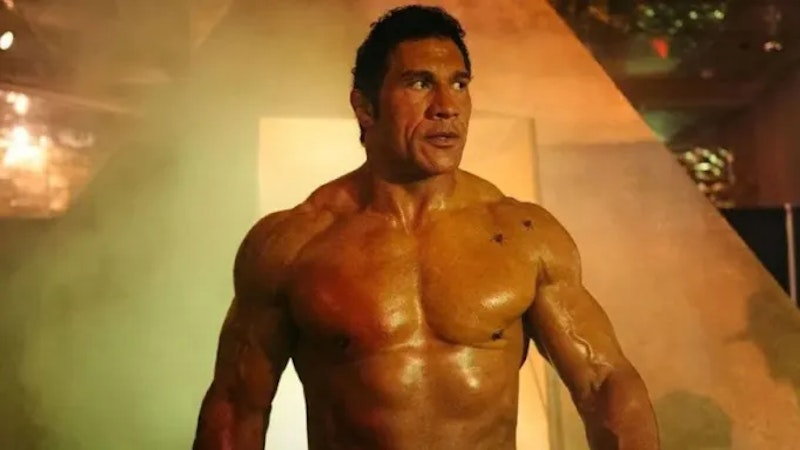Years of dueling brothers: first the Coens, then the Safdies. Who’ll win in this contest projected on these men by the press and the public? Consensus is that the verdict is in on the Coens, even if Joel has only released one solo film to brother Ethan’s two. I liked last year’s Drive-Away Dolls, but Honey Don’t! left me cold this year. Joel’s Macbeth movie was a non-starter for me, so we’ll see about his upcoming Jack of Spades with Josh O’Connor and Frances McDormand; I’m still more excited for Ethan’s Go Beavers!, the final film in the lesbian B-movie trilogy co-written with wife Tricia Cooke. Mediocre movies and bad reviews are one thing, but when you’ve got a public eager to define “who’s the better brother,” you’re in rough waters.
The Safdies’ Uncut Gems closed out 2019, and the 2010s, and it remains their most recent collaboration. Benny has kept busy, co-directing and co-starring in The Curse with Nathan Fielder and Emma Stone, along with appearances in major films like Oppenheimer, Licorice Pizza, Stars at Noon, and Are You There, God? It’s Me, Margaret. Overcompensating? Or simply spreading out after years of supporting his brother Josh’s vision? The latter’s Marty Supreme premiered at the New York Film Festival last week to raves, and this Christmas, the question posed by the press and the public will finally be answered. Judging the early reactions to Marty Supreme and the tepid reception of Benny’s The Smashing Machine, out now—though for who knows how long?—in theaters.
The Smashing Machine was supposed to be Dwayne Johnson’s Oscar movie, a career shift from blockbusters to “serious” and “artistic” dramas. Sylvester Stallone tried the same thing in the early-1990s, and Johnson must’ve been taking notes: when the film premiered at the Venice Film Festival a couple of months ago, he was wearing a suit and wire-frame glasses that made him look like Michel Foucault. This was Dwayne The Artíste Johnson, ready to burst into tears when the inevitable standing ovation hit. But just as Ari Aster’s Eddington fell flat in France, audiences in Venice apparently severely overrated the movie; when American reviews started coming out, they weren’t nasty, but none were anything more than polite. Among film fans, the reaction was hostile: how did this guy go from Uncut Gems to this?
It’s a little bit odd. The Smashing Machine follows Mark Kerr (Johnson), an early MMA fighter whose story has already been told by a 2002 documentary also called The Smashing Machine. I haven’t seen it, but by all accounts Safdie’s film follows the documentary closely, only adding a present-day coda with a clichéd series of title cards at the end telling the audience what happened to all of these characters after the year 2000. The Smashing Machine was promoted as a straightforward sports melodrama, a film full of personal adversity, domestic ups and downs, and holy grails of the committed and obsessed. No winking: this movie plays it straight, and Johnson is very good—and nearly unrecognizable—as Kerr, whether he’s in the octagon, withdrawing from opiates, high on opiates, or fighting with his girlfriend Dawn (Emily Blunt).
Blunt does what she can with the material, but The Smashing Machine has no ventilation for its moldy structure and tone. This is a sports/addiction movie where no one loses big, no one overdoses, and, crucially, no one dies. Kerr didn’t turn into Chris Benoit, and Dawn never hurt herself or her partner. Kerr struggles with painkillers, but by the film’s end in 2000, he’s clean (the same goes, presumably, for the 2025 coda with the real Kerr). He doesn’t win the Pride tournament in Japan, but that’s okay: his buddy Mark Coleman (Ryan Bader) wins in the end, and they don’t even have to fight each other. After two hours of strum und drang that quickly plateaus, the movie just ends—no climax, no obvious subversion of form.
Benny Safdie is a talented, smart filmmaker. What’s the angle here? I just can’t buy that this is straight up Oscar bait, but, taken straight, that’s what it is. As many have already written, many scenes play out like parodies of “prestige pictures;” something that would’ve been played for laughs in Southland Tales, a far more interesting if unsuccessful and uncommercial film than The Smashing Machine. When Dawn pulls out a gun and tries to kill herself, it plays like comedy, or high melodrama, something out of an Almodóvar movie. Okay, there’s the setup, now for the payoff… there is none. At the end of The Smashing Machine, Kerr is happy to have his buddy win, keep his body intact, marry Dawn, and, 25 years later, go grocery shopping.
The only subversion of form here is the absence of a climax, but what I haven’t read anywhere else is how successfully the movie manages to be entertaining without anything ever really happening. We begin in 1997, and Kerr’s already fighting, already with Dawn, already best friends with Mark, and, after maybe nine minutes, using painkillers. Kerr fights in the octagon, then he fights at home, he quarrels with his team, but the pace remains the same, even through the blowout at the end with Dawn. The fights pass in a blur, shot mostly on handheld 16mm (albeit cleaned up) along with the rest of the film save the coda. The Smashing Machine isn’t as visually designed as The Curse or Safdie’s previous features, but it isn’t indistinct, it’s functional camerawork in service of its characters. The Smashing Machine plays out like cinematic reality TV, constantly engaging but lacking any substance.
Another continental divide: Safdie won Best Director in Venice. Do we see what they see?
—Follow Nicky Otis Smith on Twitter: @NickyOtisSmith

